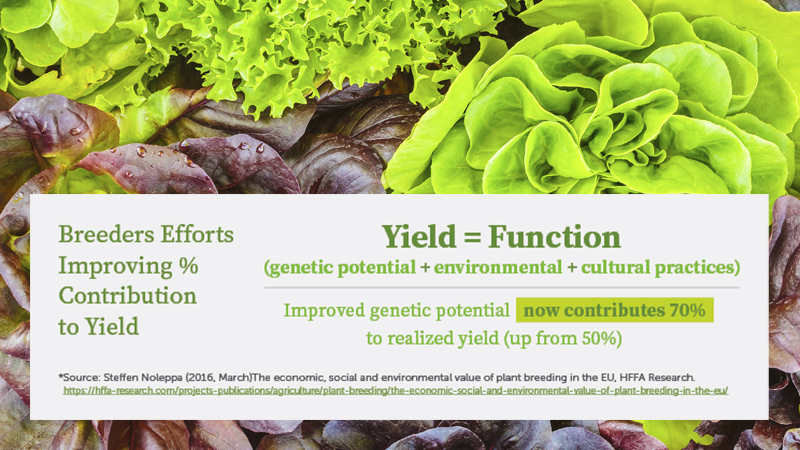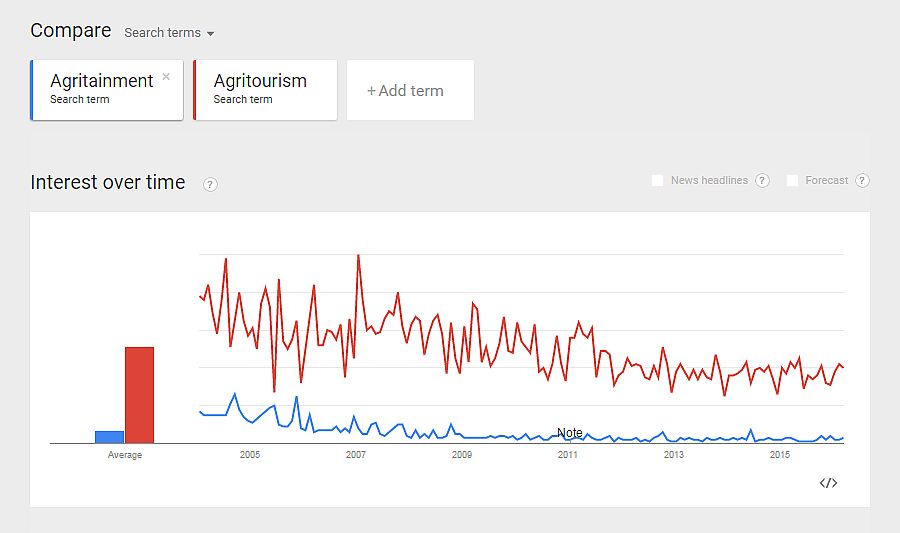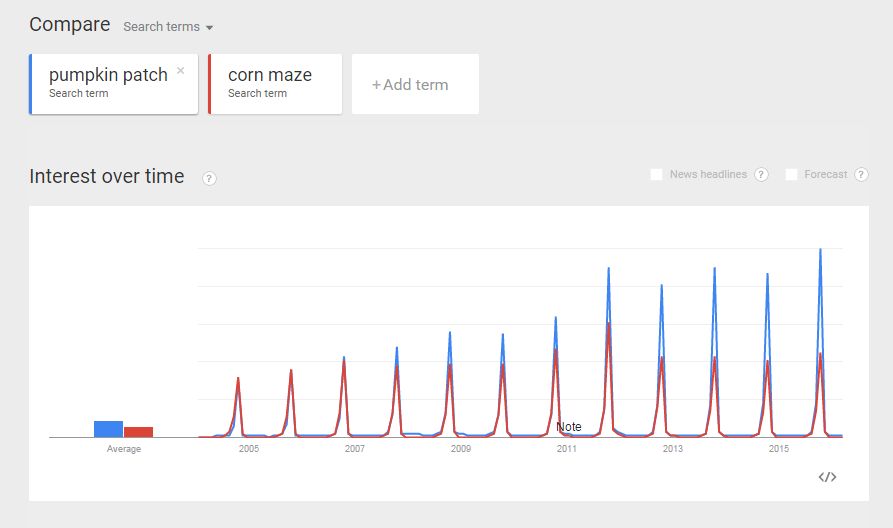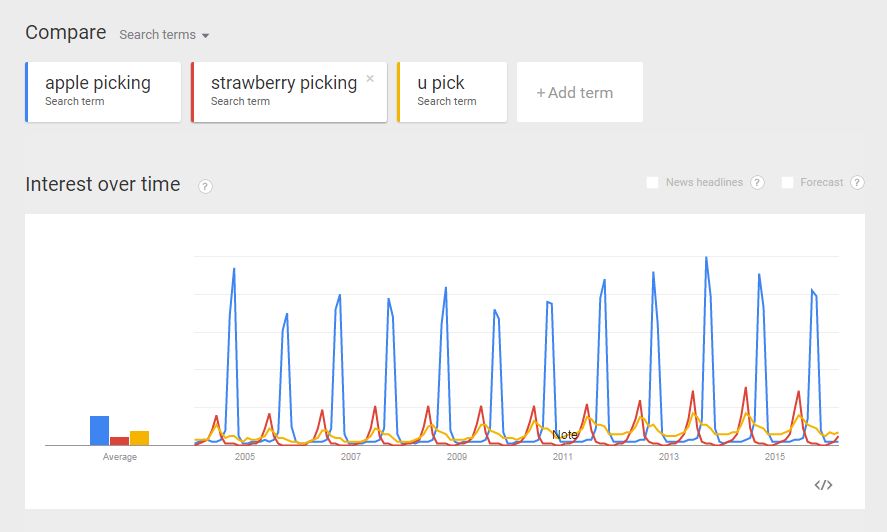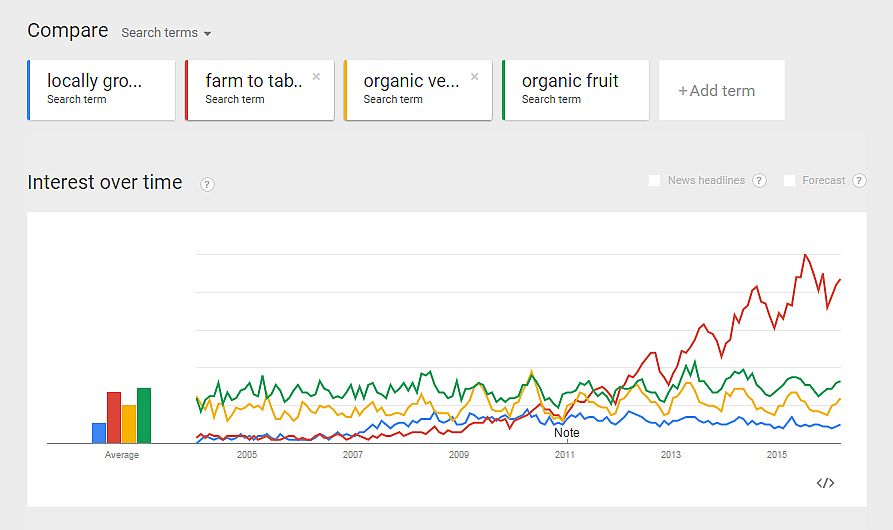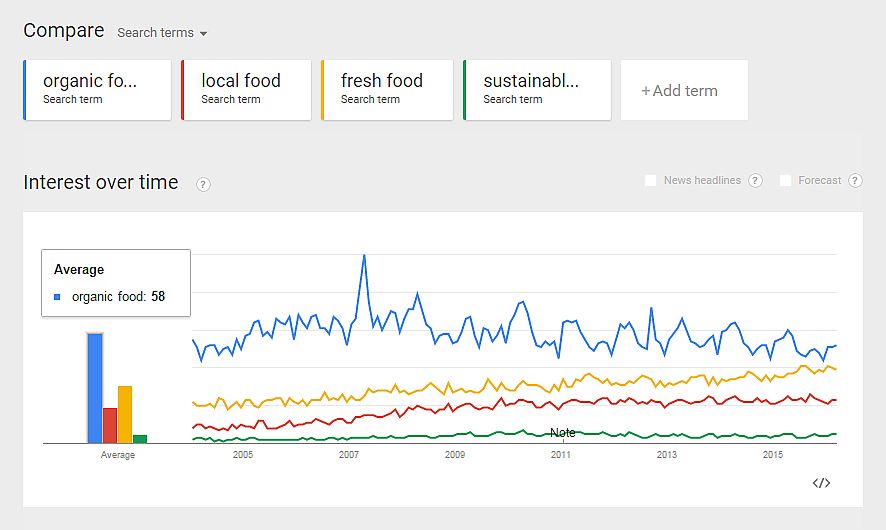Are The Farm-Market Terms Consumers Google Included In Your Advertising?
Locally based businesses like wineries, farm stands, farmers’ markets and on-farm markets depend on making an emotional connection with their community. The best way they do that is ensuring the public’s experience is memorable. But first they must persuade people to drive to them. So the words you choose in your various forms of advertising matter.
Google offers a great tool to see what’s on consumers minds when they search for anything related to fruit and vegetable farms: Google Trends.
Google Trends draws on millions of searches since 2004, a data source rarely accessible to small businesses or farmers. It’s a powerful tool, although it has its limits. It only tells you about search terms. No demographic information is included, save for general locations.
We here at American Farm Marketer were curious. What would Google Trends tell us about farm marketing and what it has to offer? Here are a few things we learned:
Comparing Farmers Market, Farm Market, Farm Stand, And Winery
We started with the basics. Which type of farm business draws the most searches? So we compared “farmers’ market,” “farm market,” “farm stand,” and winery.
The green line represents searches for “winery” since 2004, and it garners the most searches. But take a look at “farmers’ market.” Its blue line has grown significantly since 2004, hitting its stride in 2011. It’s leveling off, but holding steady.
“Farm markets” (red) and “farm stand” (yellow) are not attracting as many searches, although both have grown slowly since 2004.
On a side note, the peaks you see in the graph represent the months of high search levels. In this case, farmers’ markets high points are in June and July, and wineries are in July and August.
Agritainment vs. Agritourism
Terms we use in the industry a lot are “agritainment” and “agritourism.” I first included the terms with the previous comparison, but the number of searchers for these terms were so far below, they didn’t register. So I took a look at them on their own.
Both terms have come down in consumer popularity since 2004. Although “agritourism” is more popular than “agritainment,” these terms seem to be more popular within the industry than without.
Comparing Pumpkin Patch And Corn Maze
Next we turned our attention to different activities families can participate in. Again, this graph started out including many terms, but “pumpkin patch” (blue) and “corn maze” (red) so far outstripped the other attractions, I put them in their own graph.
Despite all the press beautiful corn maze designs get, pumpkin patches are much more popular.
Apple Picking vs Strawberry Picking vs U Pick
“Apple picking” is a much, much more popular search term than either “strawberry picking” (red) or the more broad base “u pick” (yellow).
Comparing Locally Grown, Farm To Table, Organic Vegetables, And Organic Fruit
So what descriptive words? The big store here is that red line, which is “farm to table.” It’s still on a sky rocketing trajectory.
Not surprisingly, “organic food” (blue) is the winner here, followed by “fresh food” (yellow). These rankings have held steady since 2004.







